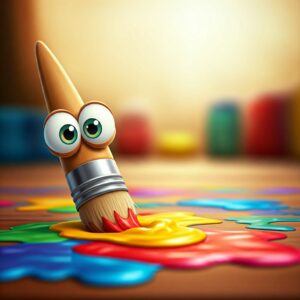How to Make Learning at Home Fun and Engaging
Homeschooling a young child is a journey filled with opportunities to create meaningful and exciting learning moments. As a mom teaching my 5-year-old at home, I’ve learned that the secret to keeping their interest lies in creativity and a touch of fun.
Children are naturally curious, and when we tap into that curiosity with interactive and hands-on activities, learning feels less like a chore and more like an adventure. If you’re just starting or looking to refresh your approach, here are some tried-and-true ideas to make learning at home both fun and effective.
- Make It Hands-On
Children thrive when they can engage their senses. Try these activities to bring lessons to life:
- Math with Everyday Objects: Use items like buttons, LEGO bricks, or cereal pieces to teach counting, addition, and subtraction.
- Science Experiments: Simple experiments like mixing baking soda and vinegar or growing a bean sprout in a jar spark curiosity and teach basic scientific principles.
- Crafting Letters and Numbers: Shape letters and numbers using playdough or trace them in a tray of salt for a tactile experience.
- Tap into Themes They Love
Children often have interests that can be woven into their learning. For example:
- If your child loves animals, incorporate animal names and facts into reading or counting lessons.
- Use a favorite book or TV show to inspire themed activities, like creating a craft or story based on the characters.
By tying lessons to their passions, you’ll keep them engaged and excited to learn.
- Incorporate Technology Thoughtfully
There are countless educational apps designed for young learners, and many can complement your teaching efforts. Apps that encourage letter tracing, phonics practice, or problem-solving games can reinforce what you’re teaching in a new way.
I recommend starting with short, guided sessions to ensure your child stays focused and learns to use technology purposefully.
- Create Visual Learning Aids
Kids often respond well to visual elements, so don’t hesitate to bring some creativity into your lessons. Ideas include:
- Charts and Posters: Make a colorful alphabet chart, a daily weather tracker, or a calendar for your learning space.
- Story Maps: Draw simple maps of a story’s events to help your child understand sequencing.
- DIY Flashcards: Create your own flashcards for sight words, math facts, or even animals and their habitats.
- Play to Learn
Play is one of the most effective ways for young children to absorb new concepts. Some playful ideas:
- Scavenger Hunts: Hide objects around the house and create clues that encourage reading and problem-solving.
- Pretend Play: Turn your living room into a “grocery store” to teach math and vocabulary, or play “teacher” to review topics together.
- Board Games: Many classic games, like memory matching or counting games, double as great teaching tools.
- Build a Flexible Routine
Structure helps both you and your child stay consistent, but flexibility is key when teaching at home. Start with short sessions—10 to 15 minutes per activity—and allow time for breaks and free play.
Having a simple daily rhythm, like reading in the morning, outdoor play in the afternoon, and a craft or game after lunch, creates a natural flow to the day without feeling rigid.
- Celebrate Their Progress
Acknowledging your child’s hard work boosts their confidence and makes learning feel rewarding. Use stickers, stamps, or even just words of encouragement to celebrate their successes. Keep a “learning journal” where you can document their milestones with photos, drawings, or written notes.
Bringing It All Together
Teaching at home is about more than academics—it’s about nurturing curiosity and building a strong foundation for lifelong learning. By infusing lessons with creativity, play, and thoughtful use of resources, you can make each day an exciting opportunity to grow together.
Remember, you don’t need to follow a strict curriculum or have all the answers. The beauty of homeschooling is that it’s as much about learning with your child as it is about teaching them. So take a deep breath, get creative, and enjoy the journey.


